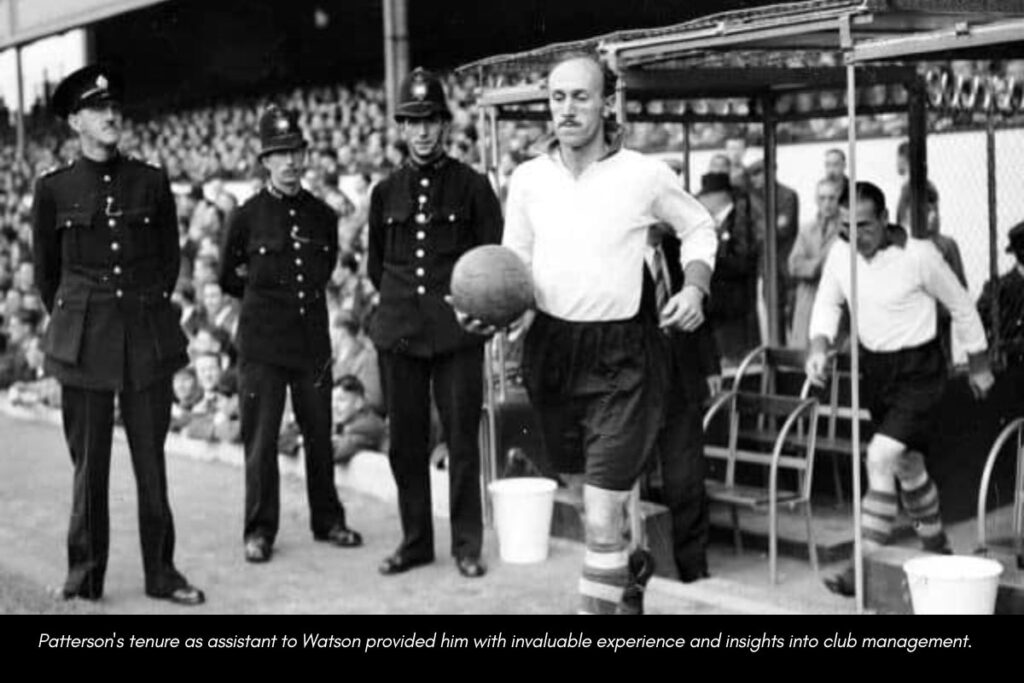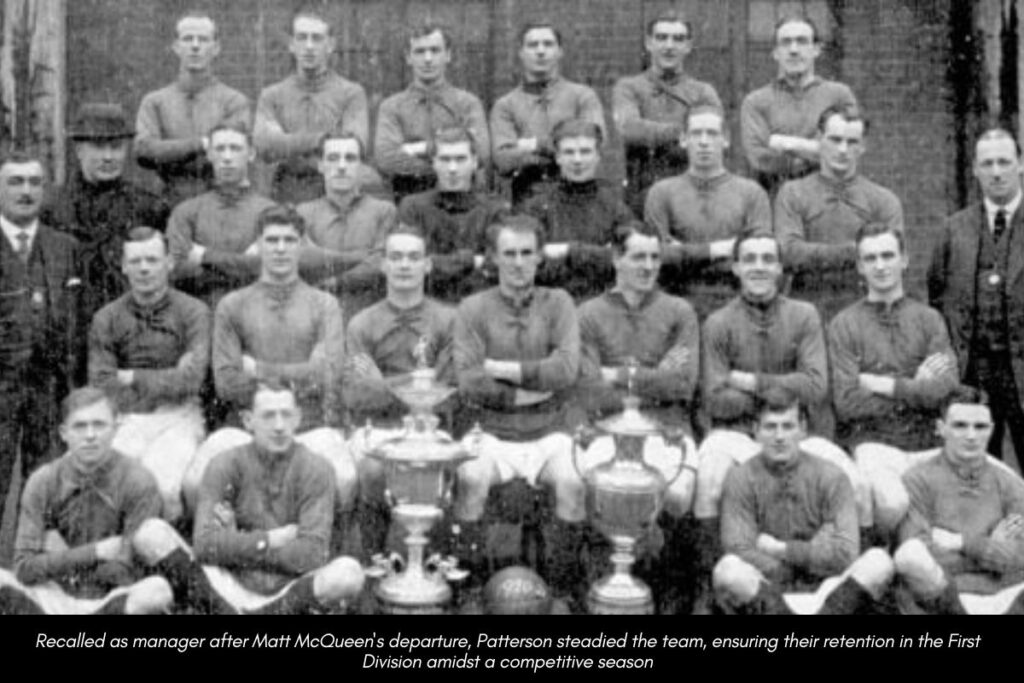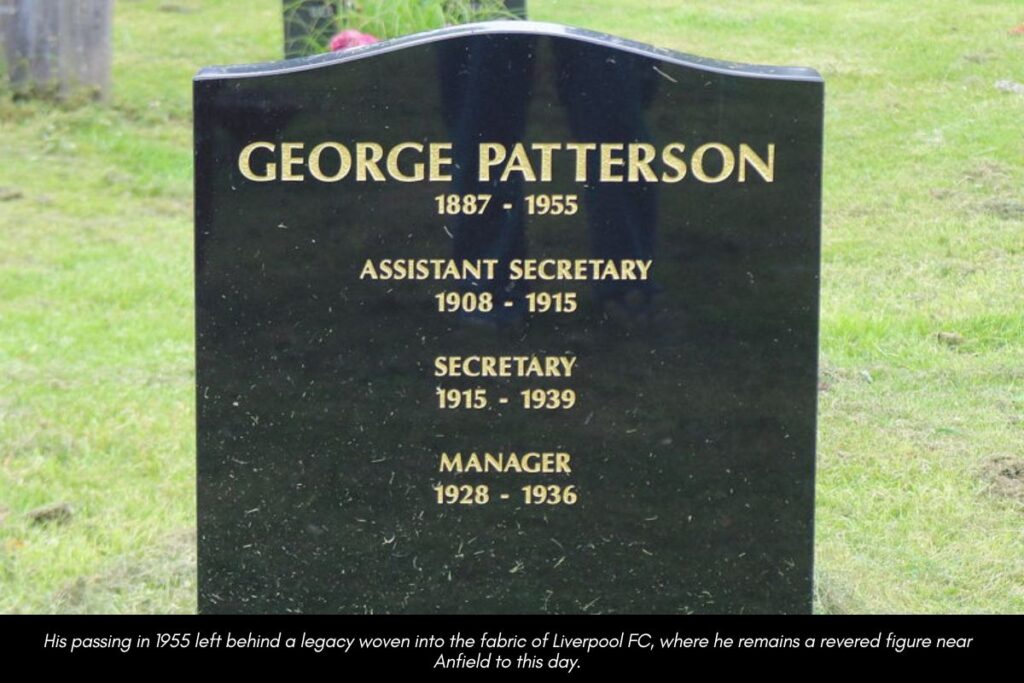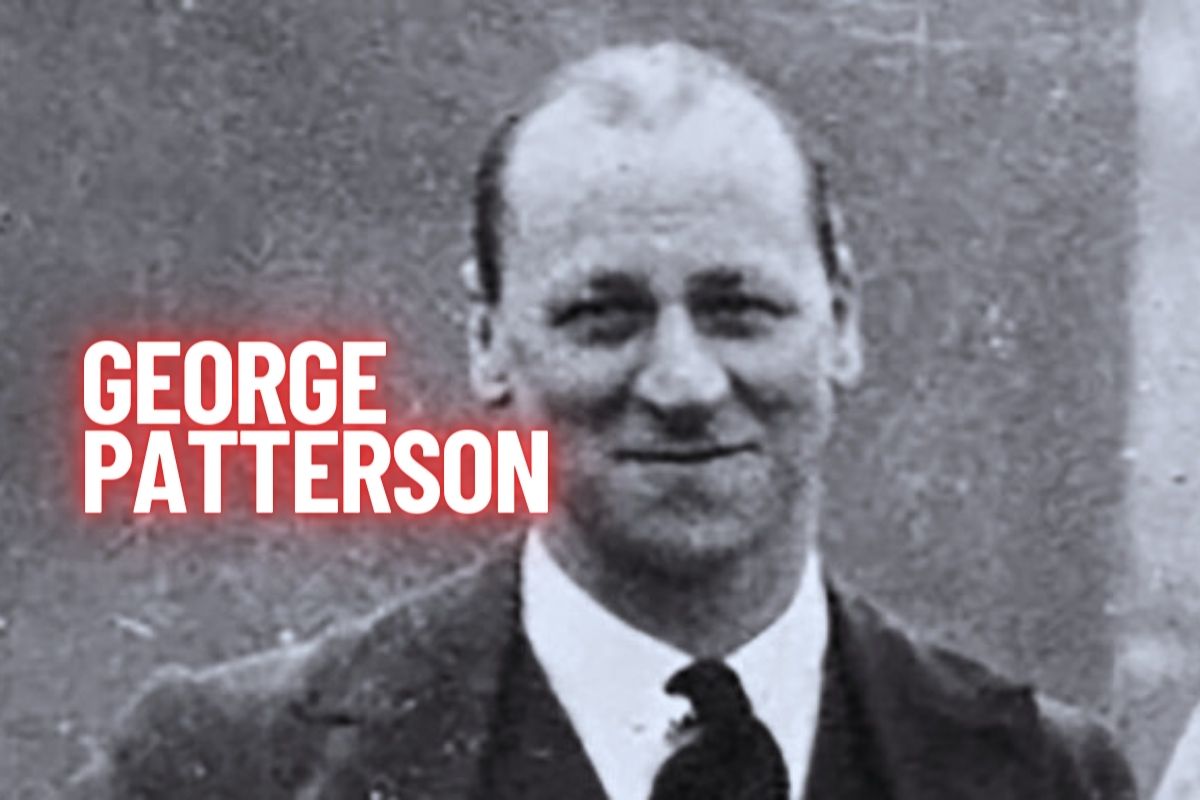George Patterson’s tenure at Liverpool FC spanned eight years, marked by stability and occasional challenges. Joining the club initially as an assistant in 1908, Patterson rose to prominence after assuming the role of secretary following Tom Watson’s passing in 1915. His transition to caretaker manager in 1919 eventually led to a full-time managerial position, where he steered Liverpool through a series of mid-table finishes in the First Division. Despite never achieving higher than fifth place, Patterson’s stewardship ensured the Reds’ continuity in the top flight. However, his tenure faced significant scrutiny during periods of struggle, culminating in his resignation from managerial duties in 1936.
Early Life and Career
In his profile, George Stanley Patterson, born in Liverpool in 1887, would later become a significant figure in the history of Liverpool Football Club. Patterson began his journey with the Reds in 1908 as an assistant to Tom Watson, coinciding with a pivotal year for the club as they laid the foundation stone for what would become the iconic Liverpool Building on The Strand.
Patterson’s early years before joining Liverpool remain somewhat obscure, but his pivotal moment came in 1915 when he assumed managerial responsibilities following Watson’s sudden death from pneumonia during the First World War. Despite the wartime disruptions to football, Patterson’s leadership during this period laid the groundwork for his eventual role as manager. While his initial stint as caretaker manager was brief, Patterson’s true tenure as Liverpool’s manager began in 1928 after the departure of Matt McQueen. Over the next eight years, Patterson’s leadership would shape the club’s direction and legacy, albeit often overshadowed by his more illustrious predecessors and the challenges of maintaining consistency during a transitional period for Liverpool FC.
Journey with Liverpool FC
George Patterson’s journey with Liverpool FC began in 1908 when he was appointed as an assistant to Tom Watson, then serving as the club’s influential Club Secretary. Born in Liverpool, Patterson had a football background, primarily playing for local side Marine before stepping into a role at Anfield.

During his early years at Liverpool, Patterson’s role as Watson’s assistant was crucial in the club’s operations, although the concept of a modern manager did not exist at the time. Watson’s managerial prowess saw Liverpool achieve significant success, including winning the Second Division and subsequently securing their first of two First Division titles in 1901. Patterson’s tenure as assistant to Watson provided him with invaluable experience and insights into club management. When Watson tragically passed away in 1915, amid the backdrop of World War I disrupting football activities, Patterson’s familiarity with the club made him a natural choice to assume the responsibilities of Club Secretary.
Thus, George Patterson’s early years at Liverpool FC were characterized by his gradual integration into the club’s administrative structure, laying the foundation for his eventual leadership role in the years to come.
Initial Tour as Manager
Amid the disruptions of World War I, George Patterson assumed a significant role at Liverpool FC beyond his administrative duties. While top-flight football in the UK was largely suspended, Patterson took charge of guiding the Reds through inter-war competitions such as the Lancashire Section Principal Tournament and the Lancashire Section Supplementary Tournament.
Although primarily known for his administrative acumen, Patterson’s steady leadership ensured Liverpool navigated these competitions with diligence and professionalism. His tenure as de facto manager continued until the appointment of David Ashworth in late December 1919. Official records may reflect Tom Watson and David Ashworth as managers, but Patterson’s interim stewardship during this challenging period remains a noteworthy chapter in Liverpool FC’s history. Despite the war’s impact on football’s formal structure, Patterson’s contributions underscored his dedication to the club during a transitional and tumultuous era.
George’s Official Appointment
Following his interim role during World War I, George Patterson was officially appointed as Liverpool FC’s manager, succeeding Tom Watson. Despite challenges like player shortages, Patterson began shaping the team, notably nurturing youth talent like Harry Chambers, a key figure in Liverpool’s subsequent successes.

Patterson’s initial managerial stint saw modest success, winning seven out of 18 games. Transitioning back to administrative duties upon David Ashworth’s arrival, Patterson remained integral as Liverpool clinched back-to-back league titles in the early 1920s. Recalled as manager after Matt McQueen’s departure, Patterson steadied the team, ensuring their retention in the First Division amidst a competitive season.
While Liverpool’s silverware drought persisted during his tenure, Patterson’s steady leadership provided stability during transitional phases. He ultimately resigned in 1936, concluding his influential career in football administration with Liverpool FC in 1938. Patterson’s legacy remains intertwined with Liverpool’s resilience and development during pivotal periods in the club’s history.
A Mesmerizing Legacy
George Patterson’s three-decade tenure at Liverpool FC may pale in comparison to the glories of other managers, yet his impact cannot be understated. As an astute administrator, Patterson played a pivotal role in shaping Liverpool’s success, focusing particularly on squad development. His keen eye for talent brought future legends like Jack Balmer, Berry Nieuwenhuys, and Matt Busby to Anfield while nurturing talents such as Harry Chambers.

Despite his behind-the-scenes role, Patterson’s contributions laid the foundation for Liverpool’s rise to prominence in English football. His commitment and foresight in talent management ensured the club’s continuity and success. Patterson’s lasting legacy is evident in Liverpool’s storied history and ongoing influence, marking him as a key figure in the club’s journey towards greatness. His passing in 1955 left behind a legacy woven into the fabric of Liverpool FC, where he remains a revered figure near Anfield to this day.
Conclusion
George Patterson’s legacy at Liverpool FC, spanning three decades, is often overshadowed but undeniably vital. His astute management and talent development laid the groundwork for future successes, contributing to Liverpool’s emergence as a football powerhouse. Patterson’s role in identifying and nurturing young talent, alongside his administrative prowess, helped shape the early legends of the club. Despite not capturing major trophies during his managerial tenure, Patterson’s impact resonates in Liverpool’s enduring ethos and culture. His dedication to the club until his passing in 1955 solidifies his place as a foundational figure in Liverpool FC’s storied history.
Read all other posts on George Patterson
Find the Latest News on Player Ratings | Transfers | Prematch | Postmatch
Stay tuned for more updates on Liverpool FC Times and Stories. Your thoughts are always welcome in the comments section. Thank you for your continued support!
YNWA (You’ll Never Walk Alone)!
The Liverpool FC Times Team
LiverpoolFCTimes.com
